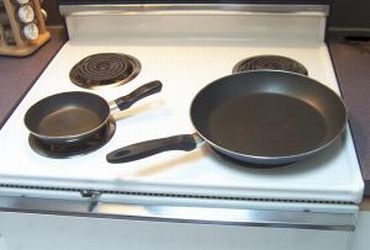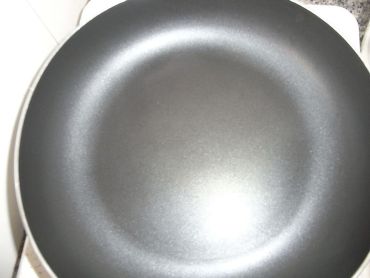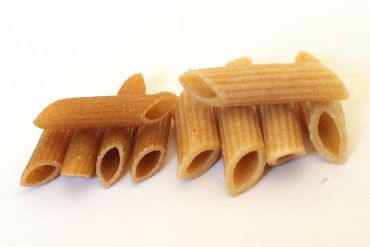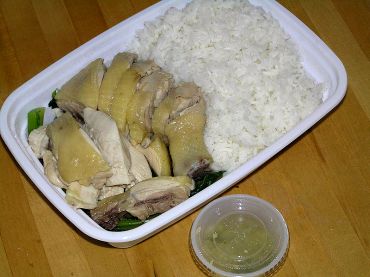Photographs: Courtesy Lifemojo.com
Prepare healthy, eat healthy -- that should be your motto!
Some believe that the way to a man's heart necessarily passes through his stomach. In other words, you can get your man in the perfect mood if you serve him perfect food!
This is the philosophy which has every dedicated wife thinking of delicious new recipes now and then. A lot of experimentation and loads of love combined make for a great dish, but not many care to look at the backstage operation! No one bothers to learn about the quantity of oil used, the time or the temperature of cooking, the quantity of spices applied, the type of meat chosen or the method of cooking deployed.
The concept of cooking leaner, lighter meals seems to fade behind a rich aroma, but you can't deny their importance. So here are a few tips on how you can cook healthier:
1. Use a teaspoon to pour oil
Never pour oil directly from its container -- always use a teaspoon, or the best way would be to use oil sprays. Oil should be used in proportion; half a teaspoon in each preparation per person. This will help cook the food with a minimum amount of oil and you will be able to monitor the entire family's oil consumption.
Do you have any special low-cal, low-fat healthy recipes to share with us? Send them in to us at getahead@rediff.co.in (subject line: 'Healthy Recipes') and we'll publish the best ones right here!
is one of the most trusted sources of information about good health and wellness. To those who want to manage their health themselves, LifeMojo provides necessary information, tips, tracking tools and support to help them stay informed and motivated.
2. Use flat-bottomed cooking utensils
Photographs: Wapcaplet/Wikimedia Commons
Use flat bottomed cookware rather than deep-bottomed pots and pans -- they will help you cook using less oil.
3. Use non-stick cookware
Photographs: Ocomejessian/Wikimedia Commons
These serve the same purpose -- use nonstick cookware especially the tawa/griddle to make chillas, rotis and pancakes with minimum oil.
4. Increase the fibre intake of recipes
Photographs: Ragesoss/Wikimedia Commons
Increase the fibre content of your dishes by adding bran to your regular wheatflour and by choosing whole fibre products instead of refined ones. For example, choose a whole wheat bread rather than the usual refined flour sandwich breads, use whole wheat noodles and pasta or vermicelli instead of the ones made of refined flour (maida).
5. Serve your salads in style
Photographs: Traumrune/Wikimedia Commons
Just cutting thin slices or cubes of raw veggies will bore your family and put them off eating healthy salads. Hence, try and use a number of recipes to make your salads more interesting. Use a variety of veggies, sometimes sprouts and sometimes fruits. Cube them, slice them or grate them and dress them with yoghurt, lemon or olive oil to add more flavour.
6. Use white or lean meats
Photographs: Benjwong/Wikimedia Commons
When cooking meats, choose the white varieties and avoid the red ones! Chicken is always better than using mutton. You can make the meat lean at home by freezing it when freshly-bought and then cleaning it, removing the uppermost skin layer. When you freeze the meat, all the saturated fat in it comes to the surface and solidifies and this can be removed while cleaning.
7. Use alternative cooking methods
Photographs: jetalone/Flickr for Wikimedia Commons
Grilling, barbecuing, baking and sauteing are better cooking methods and require very little amounts of oil. Using these heart-friendly cooking methods are definitely better than deep-frying.
8. Choose your menu wisely
Photographs: Kham Tran/Wikimedia Commons
Make sure you include foods from all the food groups everyday, to incorporate all varieties of nutrients into your family's diet. Choose veggies which are bright in colour like red, yellow, green and orange. Such fruits and veggies are high in their antioxidant content and hence protect you against stress, infections and other health problems.
9. Use milk and yoghurt
Photographs: Wikimedia Commons
Using milk and yogurt for your vegetable gravies and sauces will help you increase the protein content of your family's meals.
10. Use a variety of spices
Photographs: Heydrienne/Wikimedia Commons
Spices are rich in various micronutrients and minerals, and they also impart good flavour and taste to your meals. Spices have anti-bacterial, anti-fungal and antiseptic properties too.
11. Be careful if diabetes runs in your family
Photographs: Miansari66/Wikimedia Commons
If you have a family history of diabetes, or if anyone in the family suffers from diabetes, use cinnamon (dalchini) or fenugreek seeds (methi) while cooking as they help bring in overall control of the blood sugar levels.
Smell, flavour and a rich taste are not the ultimate objectives of cooking. Cooking is an art and a good cook is one who balances taste with health!












Comment
article